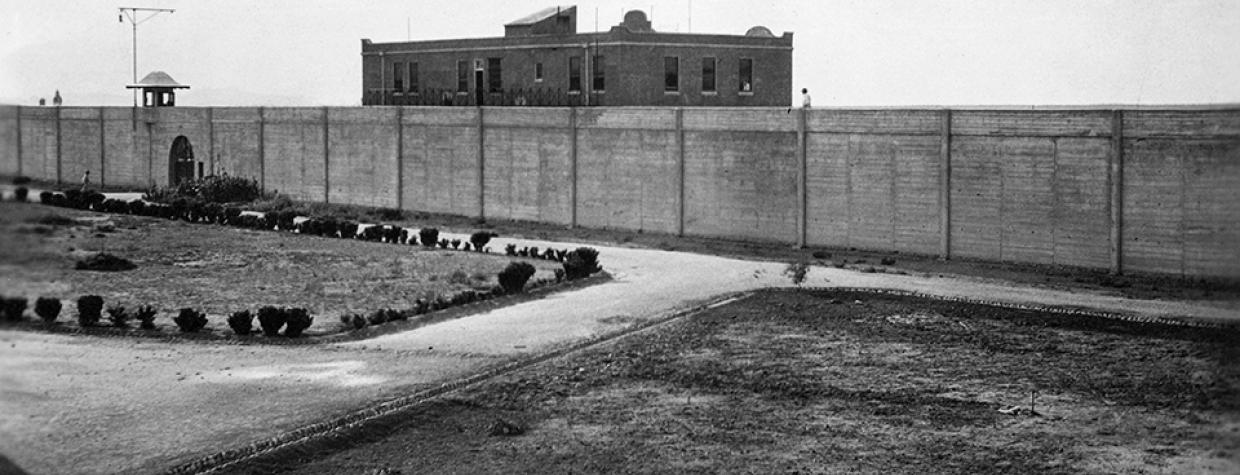In January, two men escaped from the state prison in Florence, southeast of Phoenix. The incident made national news and lit up information boards along Arizona’s freeways until the pair were apprehended in nearby Coolidge several days later. Eighty-five years ago, a break from the same prison made headlines, too — even though it didn’t last nearly as long.
The Arizona Republic’s front page on February 7, 1936, recounted the previous day’s escape in an “exclusive dispatch” from Florence. Three inmates — including apparent ringleader Harry Jarrett, who was serving a life sentence for killing a Phoenix pharmacist and had a long history of prison escapes — scaled the facility’s 20-foot south wall in broad daylight, aided by an apparatus fashioned from a pole, a hook and some old clothing. Armed with a 15-inch knife apparently improvised from a pitchfork tine, the trio headed for town and tried to steal a car in front of the Florence High School gym.
It was there, the Republic reported, that the escapees’ gray prison uniforms caught the attention of the school’s basketball team, which was practicing nearby. With no apparent regard for their own safety, the basketball players, “clad in abbreviated uniforms,” rushed the inmates, who abandoned the car and split up, with Jarrett heading north and his accomplices taking off to the west. The team split up, too, with four players pursuing in each direction.
Jarrett’s accomplices were quickly apprehended when armed prison guards on horseback overtook the pursuing basketball players. Jarrett, meanwhile, sought refuge under a Florence house where one of his own pursuers happened to live. The Republic reported, somewhat dubiously, that the boys “shouted for [Jarrett] to surrender or be dragged out and beaten.” Dismissing Jarrett’s pleas for the athletes to “be good sports,” the teenagers supposedly told him, “It’s no go. You’re going back to the prison.” A deputy sheriff who had been searching for the convicts soon pulled up in a prison car, ending the standoff.
The newspaper proudly noted that one of Jarrett’s teenage captors was a Republic paperboy. As for Jarrett and the other two inmates, their next stop was solitary confinement, although Jarrett would again escape, and make it all the way to New Mexico, later that year. This time around, the convicts’ taste of freedom lasted less than an hour — or about as long as a high school basketball game.

